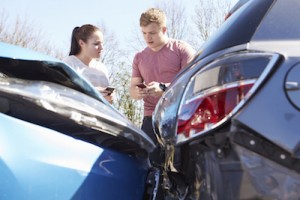 Rear end collisions are one of the most common form of road traffic accidents and insurance claims processed, according to the AA.
Rear end collisions are one of the most common form of road traffic accidents and insurance claims processed, according to the AA.
They may seem minor compared to a 10 car pile-up or an overturned lorry, but rear end shunts can cause long-term, debilitating pain and psychological damage. And the silliest part? They are, in the main, avoidable. A percentage of these collisions are down to factors outside driver control, but motorists have also simply got used to following the car in front too closely. Not observing safe stopping distances and being distracted by things like food, drinks, make-up or phone use mean that these accidents are far more common than they need to be.
What are the distance rules?
Stopping distances can be affected by a number of factors, primarily the weather conditions on the road and how fast the traffic is flowing. In slow moving, or heavy traffic, there should be a minimum of one car’s length for every 10mph that you are travelling. This is also known as your ‘thinking time’. You should stay a longer distance from larger vehicles to ensure that you have a clear view of the road ahead.
Driving under different conditions
Stopping distances change according to driving conditions:
- Normal road conditions mean that you should follow the two second rule, staying at least two seconds away from the car in front or at least one car length.
- Poor driving conditions mean that you double your safe distances, to two car lengths or at least four seconds.
- If the car in front has stopped you should leave at least enough room from that car to easily manoeuvre around it should it break down on the road. The back tyres and road surface should be easily visible to you once you’ve stopped.
Sticking to these simple distance rules means that your safety on the roads increases and it also keeps traffic disruption to a minimum.
Project Pictogram
The recently launched new driver awareness initiative, Project Pictogram is aimed at delivering messages to motorists through a series of images displayed on fleet vehicles which will make them visible on all roads. It is hoped that these images will constantly remind drivers of correct driving behaviours and will encourage them to take action leading to positive change.
With following distance rules and consequences being spelled out to drivers in this new, easily absorbed, format, it shouldn’t be long before we see a real change on the roads and a reduction in collisions.
Don’t forget to keep up to date with the latest news and advice for new drivers, as well as information on our new driver policies.



